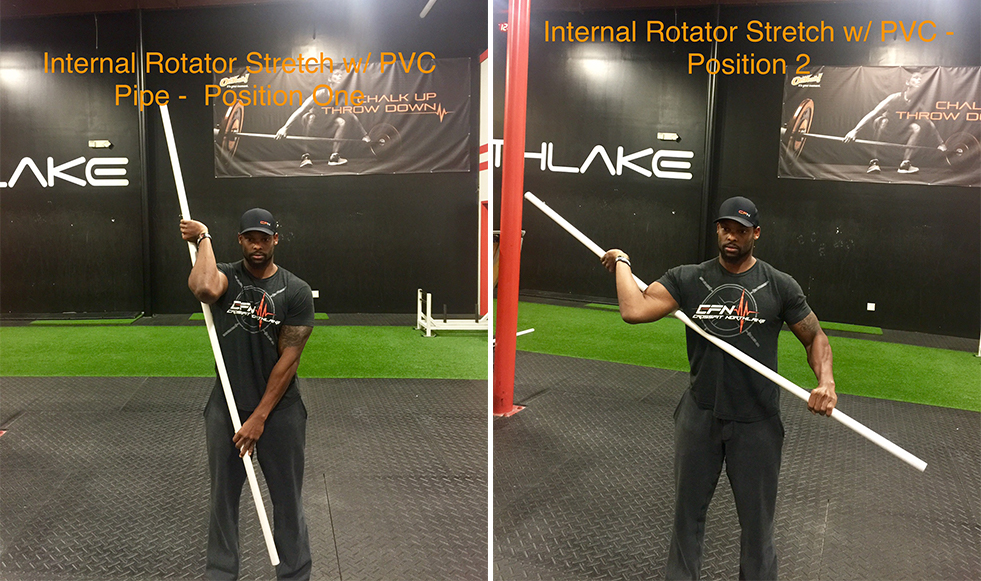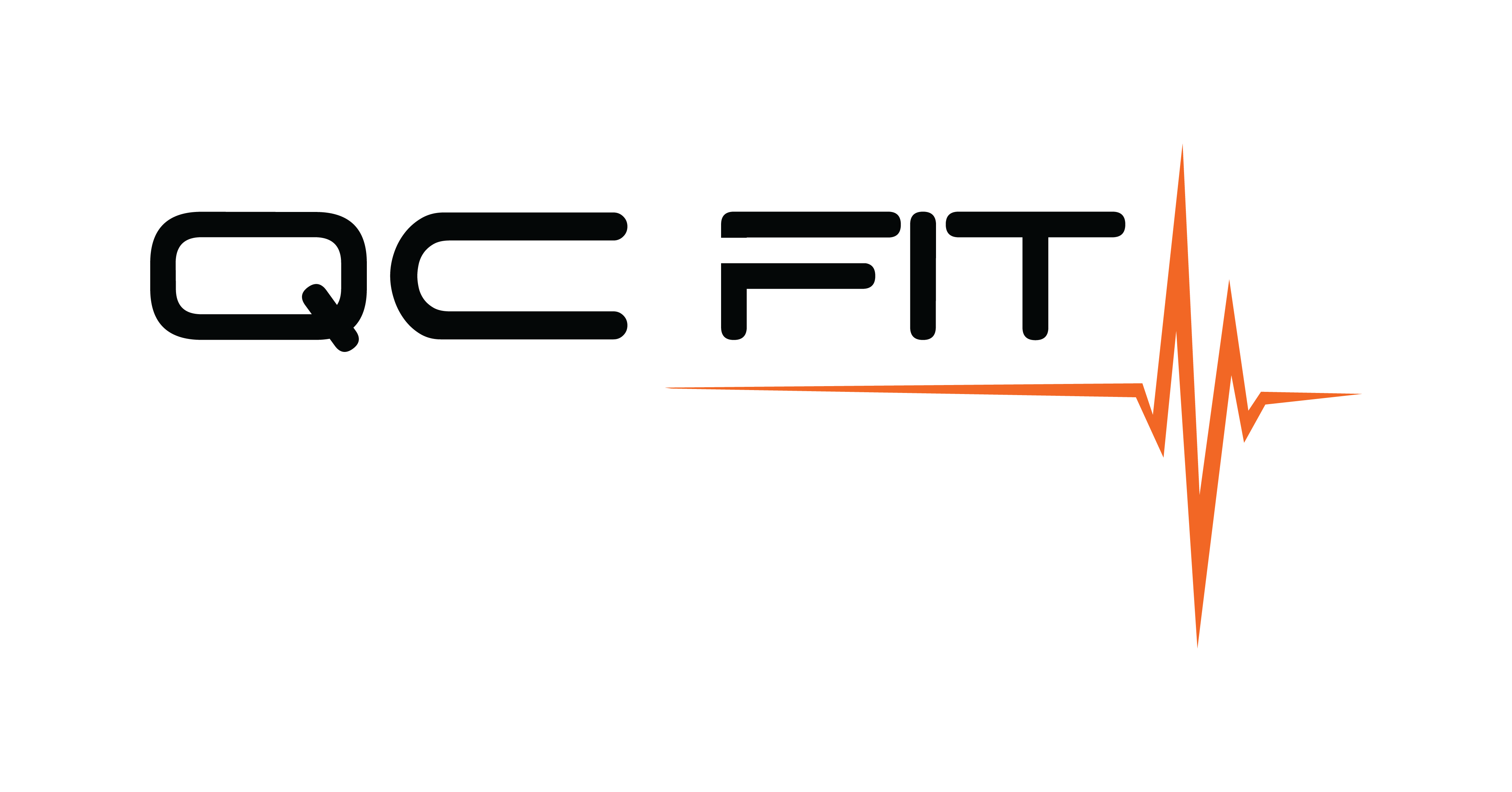Front rack position affects an athlete’s ability to effectively front squat, clean, and perform shoulder to overhead movements with the barbell. Many of our athletes come straight from desk jobs to the gym and sitting eight hours in poor posture creates tension and alignment issues in the body. By taking time to perform some mobility exercises prior to a workout, athletes can address these issues and fix them overtime.
There are several reasons for poor front rack position and it’s typically due to tight muscles throughout the upper body and wrist flexors. The focus here will be on the teres major and posterior deltoid, or in layman’s terms, part of the rotator cuff and the rear shoulder.
Internal Rotator Stretch with PVC Pipe
1. Grip the PVC pipe in the left hand with the thumb pointed downward.
2. Rest the PVC pipe on the outside of the left arm, grip the lower portion of the PVC in the right hand.
3. Point the left elbow down as if in the rock position. Shoulder should be back and down.
4. Using the back of the left arm as a pivot, pull the PVC pipe up with the right hand and externally rotate the upper arm.
5. This will stretch the back of the shoulder and/or the back of the armpit area.
6. Once in the stretched position, contract for 5 seconds by internally rotating the left arm.
7. Relax for 10 seconds but keep tension with the right arm.
8. Perform five cycles of 5 seconds on and 10 seconds rest.
9. Switch sides.

After mobilization, it’s equally important for athletes to use proper set up for the front rack position. Finding a stable and comfortable position is dependent upon the individual, but in general the following will help with proper set up:
High elbows creates a shelf and allows the barbell to sit in the front rack position without it needing to be held by the shoulders and arms. Lat engagement is critical in maintaining a stable, upright alignment. While in the rack position, slightly externally rotate the shoulders to stabilize the shoulder joint. Breathe through the belly to fill the belly with air and increase intra-abdominal pressures. This will improve the positioning of the lats and shoulders, since chest breathing may decrease the ability to maneuver under the barbell to find the rack position.
Coaches and athletes should determine if poor rack positioning is due to faulty set up or mobility issues. Once addressed, positional awareness and stabilization are key to improving the front rack position and ultimately performance.


Leave a Reply